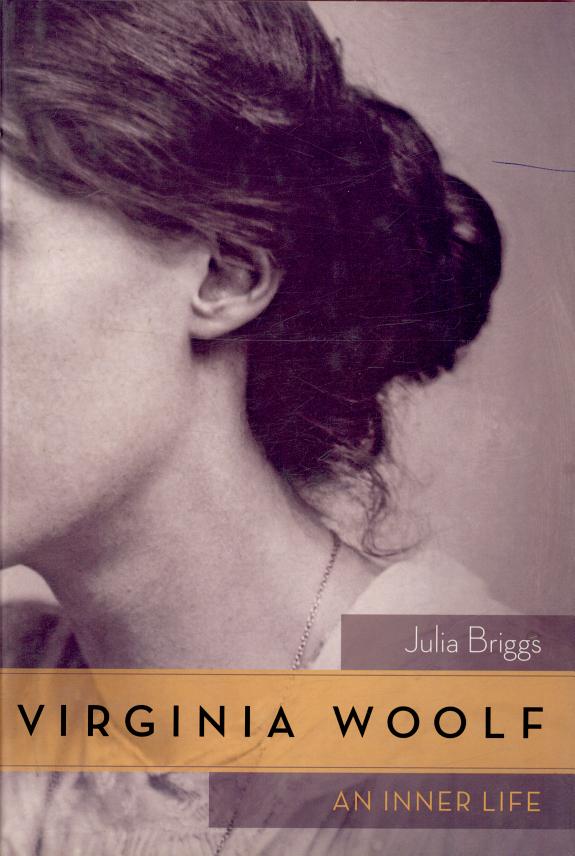Julia Briggs’s Virginia Woolf: An Inner Life, published in 2005, offers a meticulously researched and deeply empathetic biography, placing itself firmly within the genre of literary biography. Briggs, a distinguished scholar of English literature, brings her expertise to bear on Woolf’s life, not just as a writer but as a complex, often troubled individual. The book’s publication came at a time when Woolf’s literary status was firmly established, allowing Briggs to move beyond basic biographical sketches and explore the inner workings of Woolf’s mind and creative process, which is what makes this biography particularly relevant today. It allows readers to understand the woman behind the words.
The Life Unveiled
Briggs’s biography doesn’t just chronologically recount Woolf’s life; it delves into the formative influences that shaped her. From her early years in a large and intellectually stimulating household, marred by the sudden death of her mother, to her ongoing struggles with mental illness, Briggs paints a portrait of a woman constantly grappling with her inner demons and using her art to find some kind of equilibrium. We see Virginia’s close relationship with her sister, Vanessa, and the profound impact of the Bloomsbury Group on her intellectual development. It’s not just a linear progression but a mosaic of experiences that ultimately formed the author we know today. The book explores the various layers of her life, from personal to intellectual and artistic.
Character & Relationships
The strength of Briggs’s work lies in its exploration of Virginia’s relationships. She paints a detailed picture of Virginia’s complex and often contradictory feelings towards her father, her siblings, and, most importantly, her husband, Leonard. The biography doesn’t shy away from the challenges within these relationships, including Virginia’s intense dependence and subsequent resentment. The book reveals how her intimate connections, though sources of solace and inspiration, were also frequent triggers for her emotional volatility. These relationships are not merely background details but integral to understanding her creative output and mental state. Explore the inner life of Virginia Woolf here.
Themes of Mental Health and Creativity
One of the most compelling aspects of this biography is its candid portrayal of Woolf’s struggles with mental health. Briggs meticulously details her recurring bouts of depression, which she referred to as “madness,” and her attempts to manage them through writing and social interaction. The biography also explores how her mental health struggles were interwoven with her creativity. Briggs shows how her periods of intense mental turmoil often preceded bursts of creativity, suggesting a complex and symbiotic relationship between her illness and her artistic genius. This unflinching portrayal of mental illness is both deeply moving and profoundly insightful. Her writing is not just a product of her intellect but also a manifestation of her inner battles.
Crafting the Narrative
Briggs’s writing style is both scholarly and accessible. She balances meticulous research with an engaging narrative, avoiding the dryness often associated with academic biographies. Her prose is clear and concise, making it easy for readers to follow the complex timeline of Woolf’s life and the intricacies of her relationships. The biography is structured thematically, allowing Briggs to explore specific aspects of Woolf’s life in depth, which makes the book far more interesting than a chronological account. This thematic approach makes it easier to see the interconnectedness of different facets of her life. Her voice is empathetic and respectful, always keeping the focus on Woolf’s experiences and inner world.
Insights & Emotional Resonance
What truly sets this biography apart is its ability to make Virginia Woolf feel like a real person. Briggs doesn’t shy away from depicting her flaws and insecurities, nor does she attempt to reduce her to a simple label. She presents Woolf as a complex individual full of contradictions, which is what makes her so human and relatable. The biography made me feel more connected to Virginia Woolf, not just as a literary icon but as a person who struggled with the same questions about life and identity. I was particularly struck by her fierce commitment to her art, despite the numerous obstacles she faced. This level of understanding is a great tribute to Briggs’s careful research and writing style. Delve deeper into Virginia Woolf’s world.
Practical Application & Research
While not a self-help book, Briggs’s biography provides insights into managing mental health and the creative process. By showcasing Woolf’s resilience and coping mechanisms, the biography offers a historical perspective on dealing with adversity, which can be helpful to those facing similar challenges. Briggs also offers a well-researched biography with a good balance of primary and secondary sources, demonstrating her authority on the subject. Her work is a valuable contribution to the field of Woolf studies. The biography is not only insightful but also well-structured and easy to navigate. The level of detail she provides demonstrates meticulous and thorough research.
Conclusion: A Lasting Legacy
Briggs’s Virginia Woolf: An Inner Life is more than just a biography; it is a deep and personal exploration of a complex mind. It provides a comprehensive understanding of Woolf’s life and work, and makes her more accessible and human. The book leaves a lasting impression by showing Woolf as a complex person and not just a literary figure. For anyone interested in Virginia Woolf, literary history, or the intersection of creativity and mental health, this biography is a must-read. Begin your journey with Virginia Woolf here. It offers insights and perspectives that are both enlightening and emotionally resonant. I would recommend this to anyone who has an interest in literary biography. Readers who enjoy biographies such as Hermione Lee’s “Virginia Woolf” or Lyndall Gordon’s “A Writer’s Life” would likely find Briggs’s work compelling and insightful. It allows us to better understand Virginia Woolf and to feel closer to her experiences and writing.
This biography is a powerful reminder of the importance of understanding the lives of the artists we admire, and how these lives can resonate with our own. Purchase this illuminating biography today.

